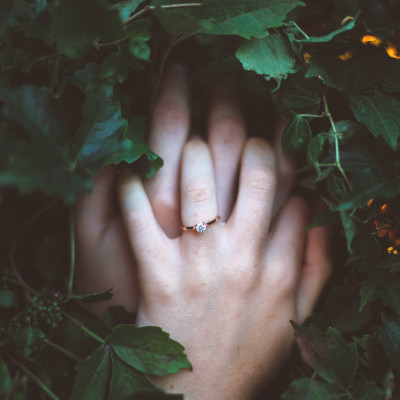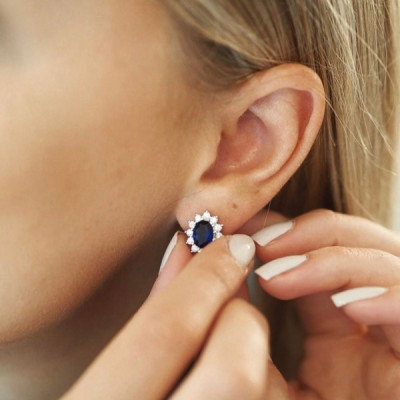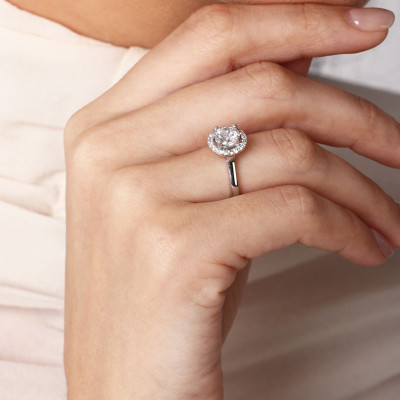After deciding that you want to spend the rest of your life with your significant other, you’d want to purchase the perfect diamond ring to ensure your proposal is unforgettable. However, when deciding on an engagement ring, there’s one major factor that deserves much attention, and that’s the ring setting. You might decide to go with the most common ring setting because you feel the diamond is the most important thing. Although this is true, the ring settings not only hold the stone, it holds the entire look of the engagement ring, and it also enhances the sparkle and beauty of a diamond. Here are the most popular styles of engagement ring settings. Before diving deeper into the various engagement ring settings, you may find our Guide to Buying an Engagement Ring helpful in understanding the overall process and factors to consider.
What is the best setting for a diamond?
1. Prong Setting
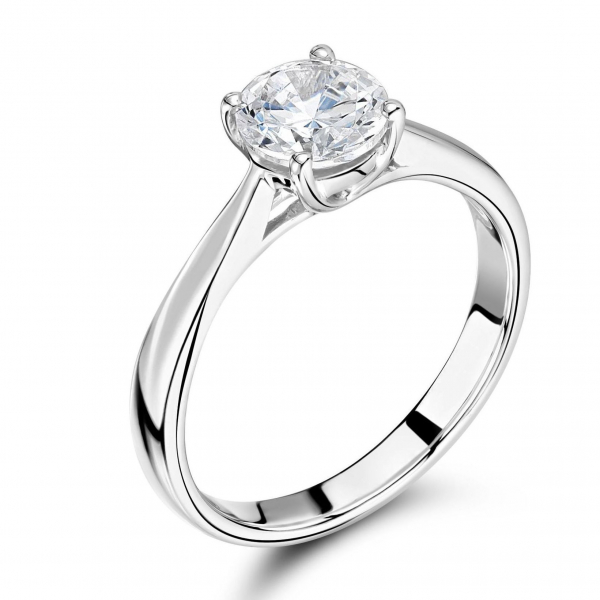
Prongs are the most commonly used and classic ring setting. A prong is a little metal claw that holds the diamond in place by gripping it tightly. They are known to be pointed, flat, rounded, or V-shaped. For round shapes, 4 or 6 prongs may be used; with 6 prongs providing a more secure setting, while 4 prongs hold the stone properly for people with a less active lifestyle or smaller stone; as it also allows more light into the gemstone thus, improving its sparkle. Whereas, V-shaped prongs are for fancy shapes as they require a different number of prongs to hold their sharp corners and provide protection from chipping. The con with prongs is that they are not suitable for those with active lifestyles as they can snag on clothing. And, they can loosen with time, so you’d need a jeweler to check the prongs every year to ensure the stone remains firmly held.
2. Pavé Setting
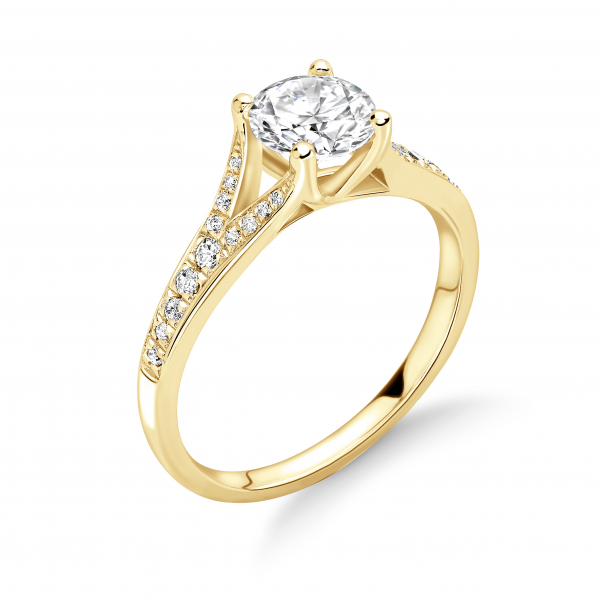
Pave ring settings are paved with smaller diamonds which are placed directly next to each other without breaks to create the impression that the ring setting is made of diamonds. This thus produces extra sparkle as the surface of the ring is covered in diamonds, resulting in a continuous glittering surface. Any gemstone can be selected for the pave engagement ring, but the most popular engagement rings are made with diamonds placed directly next to each other and held in place by tiny beads of platinum or gold. The pros of pave setting are that you don't see the metal of the setting, which results in an extra sparkle from the gemstones.
3. Halo Setting
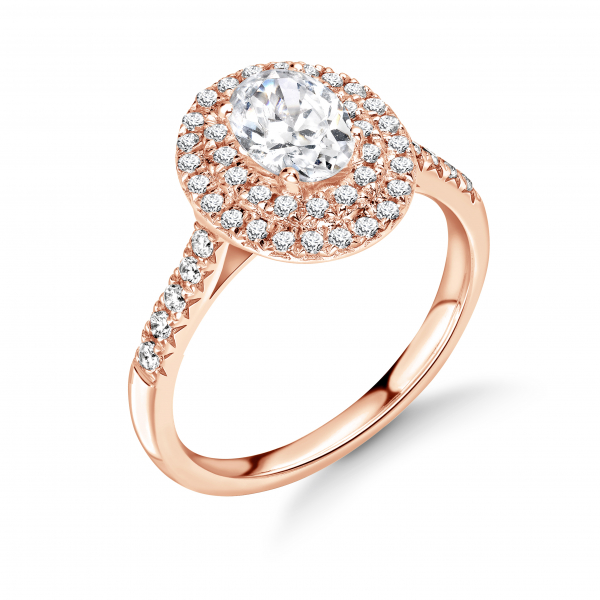
In this setting the diamond is placed in a concentric circle or square around a center stone, making the center stone appear larger and enhancing the overall sparkle of the ring as it frames the center diamond in a most striking way. However, cut is important when it comes to halo rings, as it places the beauty and brilliance of the diamond at the center of the ring design.
4. Bezel Setting
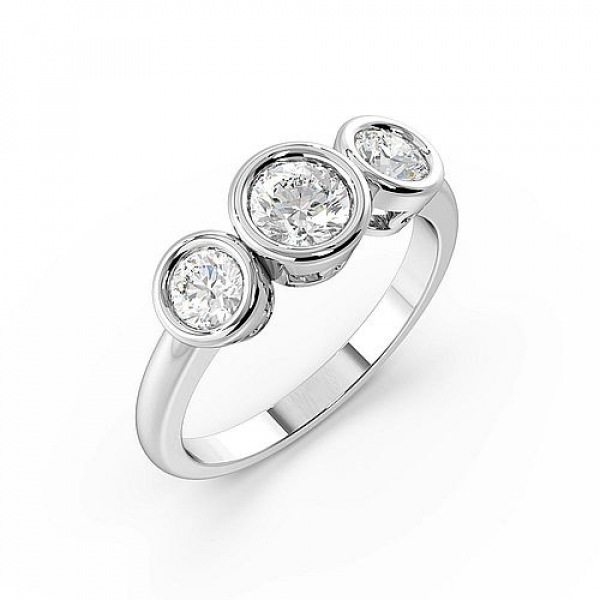
The bezel is the second most popular ring setting and the most secure because of its modern look and how it suits anyone with an active lifestyle. Unlike prongs, the bezel setting focuses on the centrally located diamond which is encircled with a thin metal rim custom-made to secure the diamond tightly in place. People with an active lifestyle do not have to worry about chipping or snagging a stone as this setting completely protects the outer edges of the gem or stone; offering the best protection.
5. Channel Set Ring Setting
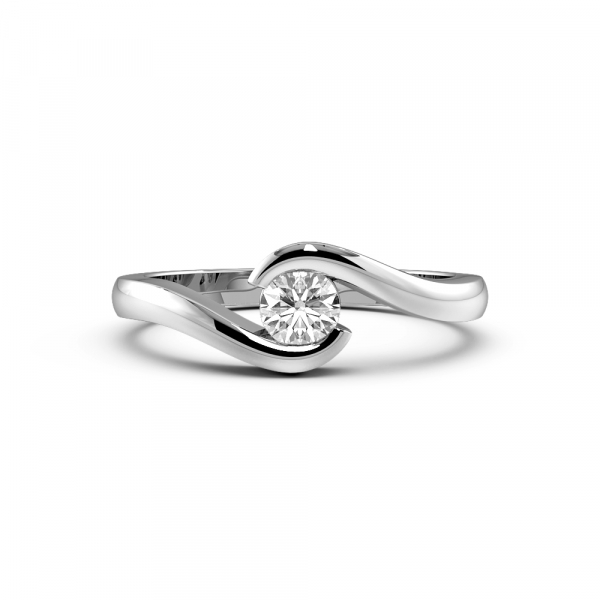
In this setting, smaller diamonds are set into the band of the ring thus, creating an appealing channel of small diamonds that offers extra glitter and fire. The smaller diamonds are placed into the ring's channel groove and are held in place by a thin metal strip, which makes the smaller side diamonds appear on the same level as the ring band. The pros of this setting are that the ring is more durable and won’t get entangled in your clothing for people with an active lifestyle.
Does a higher setting make a diamond look bigger?
The setting of a ring defines the ring style, protects the ring from loss or damage, and adds glitter to the diamond. You may be wondering if it’s true that a higher setting on your engagement ring can make the diamond look bigger. Yes, it is true; the right setting will make your diamond look bigger and more sparkling. However, you’d want to care about the stone as most stones lower than 0.5 carats will appear smaller.
So, what setting makes diamond look bigger? If you want a big-sized diamond but can’t afford the price, you can create an illusion of size by selecting the right setting that’ll make your small diamond look bigger. What setting are those?
1. Cluster setting
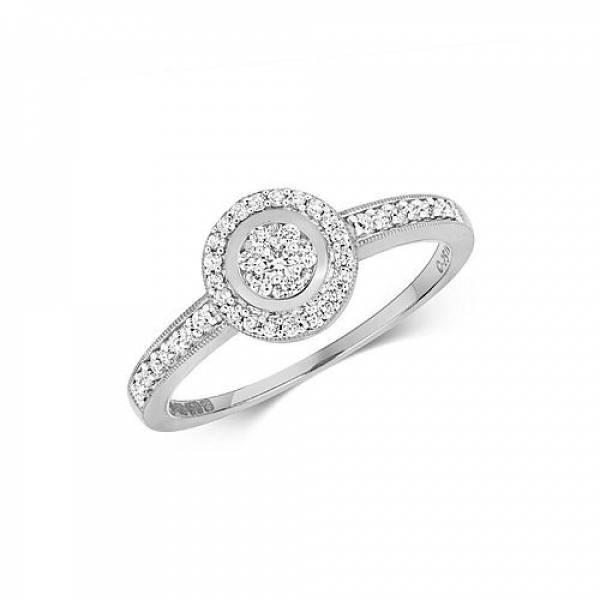
In this setting, several small diamonds of similar size are placed next to each other in order to enhance sparkle and give the illusion of a single diamond that is larger in size and also, that costs more. Diamonds of similar color grades are used in this setting as they work best together, and more metal is used to surround the stone to ensure it is protected and safeguarded against damage.
2. Halo setting
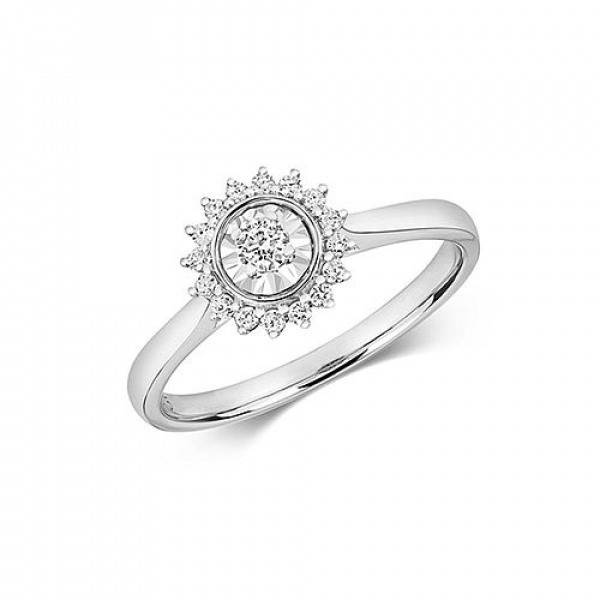
This setting naturally looks big because the center stone is surrounded by a set of rings made of smaller accent rings, which makes the shape exceed the size of the center stone optically. It is then further enhanced by the extra glitter from the diamonds in the setting. It is recommended for those who want their ring to look big without worrying about buying a ring with a big diamond. A center stone of weight 0.50 ct or more is best for this setting.
3. Pavé setting
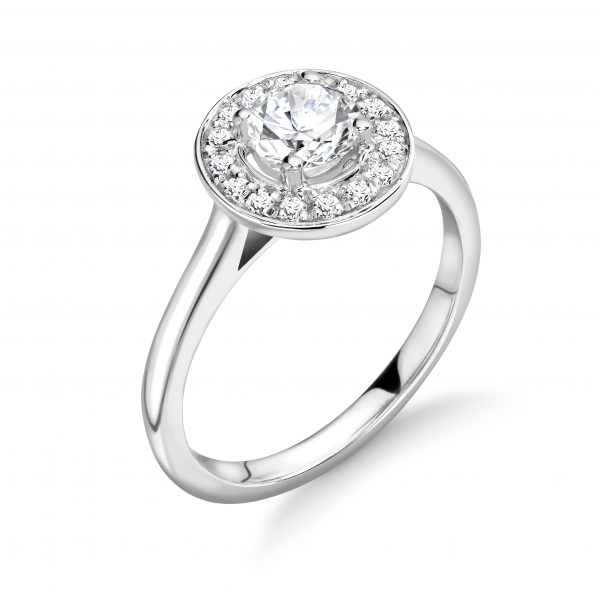
In this setting, diamonds of weight 0.20 ct or smaller are placed into tapered holes on a metal surface. This setting creates an illusion of continuous diamonds in the band, making the center stone look larger. This setting is also very secure as the diamonds are set into a metal.
4. Bezel setting
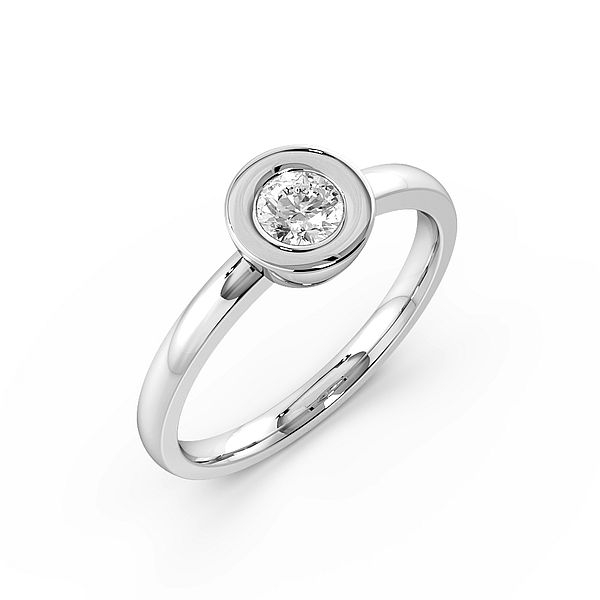
In this setting, a band of metal surrounds the diamond’s girdle, which makes the diamond’s circumference look bigger. This setting is mostly used for round and oval diamonds and would reduce the brightness of a poorly cut diamond. It also offers protection against accidental bangs or bumps for those with active lifestyles.
5. Invisible setting
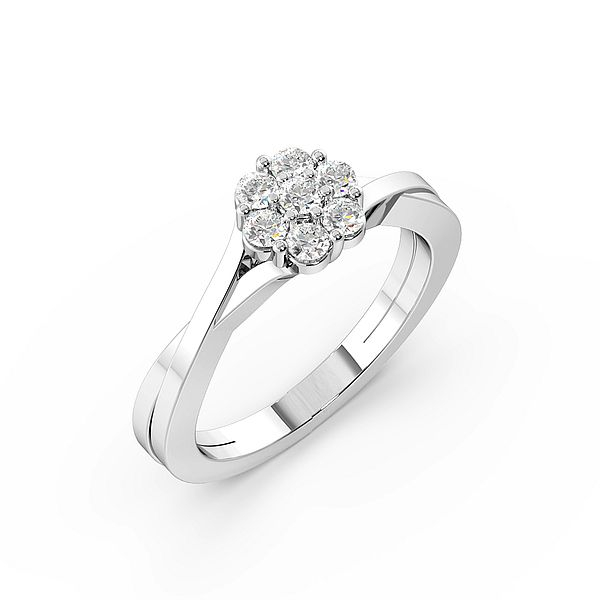
In this setting, small diamonds are cut with grooved pavilions and slipped into a thin wire framework thus, not requiring prongs and allowing the gems to be set against each other; resulting in the entire diamond being visible, and looking like one large gem. This setting isn’t good for people with an active lifestyle.


